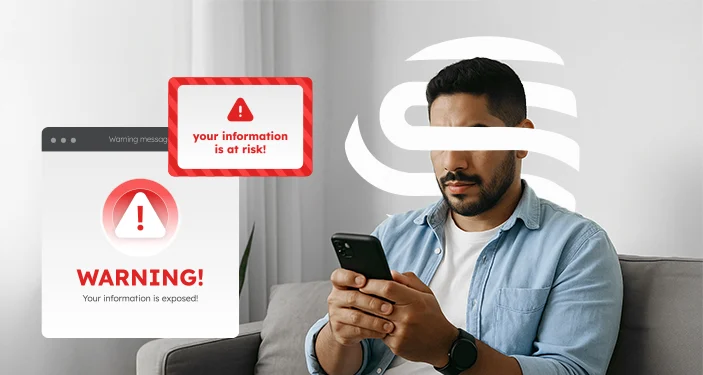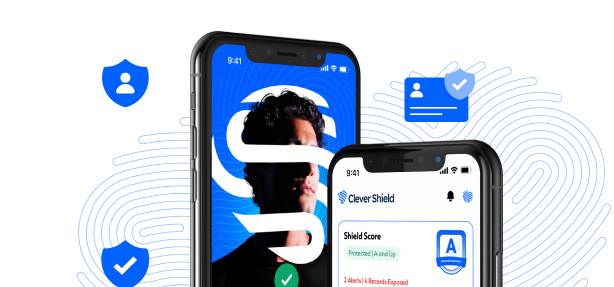Has your identity been stolen? You need clear steps to recover. This guide on ‘my identity was stolen step by step recovery with expert help’ outlines exactly what to do to protect yourself and minimize damage.
Key Takeaways
- Begin recovery from identity theft by assessing the damage through careful examination of bank statements and credit reports to identify unauthorized transactions.
- Immediately notify financial institutions about fraudulent activity, close compromised accounts, and place fraud alerts on credit reports to prevent new account openings.
- Engage expert help if needed; utilize resources like IdentityTheft.gov for recovery plans and consider professional services for comprehensive identity restoration.
Assess the Damage
Begin your recovery from identity theft by assessing the damage. Closely examine your bank statements and bills for any unauthorized transactions or unfamiliar accounts. Identifying identity fraud and fraudulent activity early allows you to act quickly and mitigate further damage to recover from identity theft.
To detect identity theft, follow these steps:
- Obtain free credit reports from Equifax, Experian, and TransUnion, including those from credit reporting agencies.
- Scrutinize the reports for unfamiliar accounts or unauthorized inquiries.
- If you receive notifications from a collections agency regarding accounts you did not open, consider this a significant indicator of identity theft.
Grasping the full extent of the damage will guide your subsequent recovery steps.
Notify Financial Institutions
After identifying fraudulent activity, take the following steps:
- Contact your bank and other financial institutions without delay.
- Notify your bank immediately to help mitigate unauthorized transactions and prevent further misuse.
- Provide detailed information to your bank’s fraud department, which handles such cases.
To address compromised accounts, follow these steps:
- Close compromised accounts to prevent further unauthorized charges.
- Contact your financial institutions to help open new accounts and transfer your funds.
- Provide any related documentation to aid in their investigation and resolution process.
- Document all communications for future reference.
To address identity theft, take the following steps:
- Notify Equifax, Experian, and TransUnion about the identity theft to update your credit reports and prevent further fraud.
- Understand that this helps in updating your credit reports and preventing further fraudulent activity.
- Be aware that the Federal Trade Commission (FTC) compiles identity theft reports into a secure database accessible by law enforcement.
Place a Fraud Alert
Place a fraud alert on your credit report to protect yourself from further identity theft. A fraud alert warns lenders, prompting them to verify your identity before extending credit. This measure helps prevent identity thieves from opening new accounts in your name.
An initial fraud alert lasts for one year and does not affect your credit report or score, though it may delay instant credit approvals. Confirmed victims of identity theft can request an extended fraud alert, lasting seven years. Contact one of the three major credit bureaus to initiate a fraud alert; they will notify the others.
Fraud alerts automatically deactivate after their duration, but you can reapply once they expire. To remove a fraud alert sooner, contact each credit bureau individually. These steps can significantly reduce the risk of further fraudulent activity.
Freeze Your Credit
Freezing your credit is a powerful tool in your identity theft recovery plan. A credit freeze prevents creditors from accessing your credit report, stopping new accounts from being opened without your permission. Contact Equifax, Experian, and TransUnion to initiate a credit freeze or credit freezes.
You can request a credit freeze online, by phone, or through the mail. Credit bureaus must freeze your credit report within one business day when requested online or by phone. This quick action can prevent identity thieves from causing further harm. If you unfreeze your credit report, the bureaus must lift the freeze within one hour for online or phone requests.
Many banks allow you to temporarily freeze your accounts to prevent unauthorized access. These tools provide peace of mind and prevent identity thieves from opening new accounts in your name.
Report Identity Theft
To aid your recovery from identity theft, follow these steps:
- Report identity theft promptly.
- Visit IdentityTheft.gov to create an identity theft report documenting the details of your case for future reference.
- Provide accurate personal details when filing the report to facilitate claim processing.
The FTC compiles these reports into a secure database accessible by law enforcement for investigations. This collaboration aids in tracking and combating identity theft on a larger scale. The ftc identity theft report offers personalized recovery plans based on your information, guiding you through each recovery step.
File a complaint with the FTC if you encounter difficulties resolving disputes with financial institutions. This ensures your case receives proper attention and support for recovery.
File a Police Report
To file a police report to document the crime and provide a legal record for further recovery steps, include the following detailed information:
- Description of the identity theft incident
- Dates when the incident occurred
- Amounts involved in the fraudulent activity
- Relevant communications related to the incident
Providing these details will help ensure the report is comprehensive and reported useful for recovery resources efforts.
A police report helps victims dispute unauthorized transactions and assists law enforcement in investigating the theft. Request a copy of the report for your records, as it may be required for legal proceedings or dealing with creditors.
Dispute Unauthorized Charges
Contact the fraud department of your credit card issuer or bank immediately to dispute unauthorized charges related to credit card fraud. Immediate notification helps in disputing fraudulent charges before they accumulate.
Gather supporting documents like account statements and communications regarding the fraudulent activity to strengthen your case. Document all communications with banks and credit agencies to reinforce your claims and ensure a smoother recovery process.
These steps can help you recover lost money and restore financial stability.
Change Passwords and Secure Accounts
Secure your accounts to prevent further identity theft. Immediately change your logins, password, and PINs. Create complex and lengthy passwords to enhance security.
Consider the following security measures:
- Change usernames along with passwords to increase security.
- Enable two-factor authentication for added security.
- Enable this feature on accounts that support it.
- If unable to access an account, contact the service provider for assistance in recovery or shutting it down.
Monitor Your Finances
Regularly review your financial information records to identify ongoing fraudulent activity and scams. Check your bank statements and credit reports to spot unauthorized transactions and accounts.
Analytics tools can enhance your ability to detect fraudulent activities by providing better transaction visibility. If you suspect your information is compromised, placing a fraud alert can prevent unauthorized credit access.
Utilize Expert Help
Licensed investigators and restoration specialists can greatly facilitate the identity restoration process. IdentityTheft.gov offers tools for tracking recovery progress and ensuring ongoing updates to recovery plans.
CleverShield provides the following services:
- Assigns licensed investigators and restoration specialists to handle identity restoration, ensuring a complete resolution.
- Offers 24/7 smart protection.
- Provides expert support to help individuals and families navigate potential threats.
Professional services can significantly expedite the recovery process, allowing victims to regain control of their identities more quickly as a person in companies businesses.
Proactive Measures for Future Protection
Proactive measures can safeguard your identity from future threats. Fraud detection systems analyze user behavior patterns to spot anomalies indicating identity theft. Machine learning is increasingly used in fraud detection to compare normal behavior against potentially suspicious actions.
Family-friendly protection plans cover multiple family members under a single subscription, offering comprehensive identity protection. CleverShield offers 24/7 identity monitoring, including dark web monitoring, to detect exposures of personal data such as:
- Social Security Number
- Emails
- Phone numbers
- Banking information.
Real-time alerts and immediate notifications when suspicious activity or breaches are detected provide an additional layer of security.
Summary
Recovering from identity theft is a complex process, but taking the right steps can help you regain control. Start by assessing the damage, notifying financial institutions, and placing fraud alerts. Freezing your credit and reporting the theft to the FTC and local police are crucial steps. Dispute unauthorized charges, secure your accounts, and continuously monitor your finances to prevent further issues.
Utilizing expert help, like CleverShield, can expedite the recovery process and provide peace of mind. Implementing proactive measures, such as fraud detection systems and family-friendly protection plans, can safeguard your identity against future threats. Remember, with the right actions and support, you can recover from identity theft and protect yourself from future risks.
Frequently Asked Questions
What steps should I take if my identity has been stolen?
If your identity has been stolen, immediately place a fraud alert on your credit report, file a report with the Federal Trade Commission at IdentityTheft.gov, and close any fraudulent accounts. Additionally, report the theft to your local police to help safeguard your finances and reputation.
What is the first step of recovery from identity theft?
The first step in recovering from identity theft is to immediately call the fraud department of the companies involved and report the theft. Request that they close or freeze your accounts to prevent any further unauthorized activity.
How can I prevent identity thieves from opening new accounts in my name?
To effectively prevent identity thieves from opening new accounts in your name, place a fraud alert and consider freezing your credit. These measures add significant protection to your personal information.
Why is it important to file a police report?
Filing a police report is crucial as it creates a legal record of the crime, which is essential for addressing issues like unauthorized transactions. This documentation can help protect your rights and support any necessary investigations.
What proactive measures can I take to protect my identity in the future?
To effectively protect your identity in the future, enable two-factor authentication and consider implementing fraud detection systems. Taking these proactive measures can significantly enhance your security against potential threats.
Conclusion
Recovering from identity theft can feel overwhelming, but it doesn’t have to leave you powerless. By taking decisive action — from assessing the damage and freezing your credit to filing official reports and disputing fraudulent charges — you reclaim control of your financial life. The key is speed and persistence: the faster you respond, the less room criminals have to exploit your identity.
Expert guidance, whether through resources like IdentityTheft.gov or comprehensive services like CleverShield, can simplify the process and reduce stress. You don’t need to navigate complex legal and financial systems alone — professionals can accelerate recovery and provide long-term protection.
Remember, identity theft isn’t just a one-time crime; it’s an ongoing risk. Taking proactive measures today, like setting fraud alerts, using two-factor authentication, and monitoring the dark web, ensures you’re prepared tomorrow. With the right steps and support, you can turn a painful experience into a turning point where you take control, strengthen your defenses, and secure your future.






